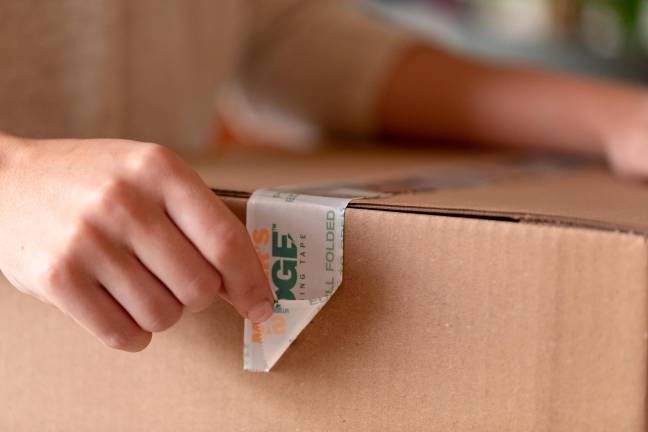6.

When it comes to moving, we usually focus on the process of getting organized and boxing up valuables. But we often forget about the debatably more stressful part of moving: unpacking.
In fact, Americans take an average of 182 days — more than six months! — to finally unpack the last box after moving into a new home, according to Duck Brand research.
Regardless of whether you’re moving across the country or down the street, the best way to guarantee a smooth transition is to plan ahead.
To make settling into your new abode much easier, start by thinking about the process backwards and consider these tips:
Measure everything during the home inspection. Use your time on inspection day to collect all room and cabinet dimensions. This will help determine if furniture will fit, where items will go and how much storage is available. Pro tip: Precut shelf liner to instantly line drawers and cupboards on move-in day.
Pack based on where it will go, not where it was. Envisioning where items will go in your new space is key. Then, label each box with its contents, as well as the room where it should be unpacked. Not sure what moving supplies you’ll need? The free online moving calculator at DuckBrand.com is a great resource. Simply input your number of bedrooms and baths, and you’ll receive a printable/sharable shopping list based on your specific needs.
Use plastic bags and tape to keep pieces together. For smooth assembly, use packaging tape and small plastic bags to attach screws, nuts and bolts to the bottom of dismantled furniture. This can prevent losing those small, essential pieces and perhaps even reduce the number of hardware store trips on move-in day.
Utilize tools that make opening boxes easy. Choosing a heavy-duty packing tape is critical to ensure boxes stay secure, but searching for a blade to open boxes while unpacking can be frustrating. Instead, try Duck brand Mover’s Edge, a unique heavy-duty packaging tape and refillable dispenser system that makes it easy to seal and unseal boxes -- no blade or boxcutter needed. As tape flows through the dispenser, the edges on each side of the tape are slightly folded. This allows for easy removal when you’re ready to unpack; just lift up the folded edge by hand and pull off the tape.
Avoid breaks and spills. Fifty-five percent of Americans have experienced an important item being damaged during a move, according to Duck Brand research. To make sure your valuables arrive intact, use products that offer increased protection like Bubble Wrap cushioning and Foam Pouches. Pro tip: For additional safeguarding, use plastic grocery or storage bags to contain any items that could potentially spill.
Pack storage items in plastic bins rather than boxes. While cardboard boxes are an easy and cost-effective way to transport the majority of your belongings, plastic storage containers are more ideal for seasonal items that may not be unpacked, but instead stay in storage. Not only will the bins shield contents from the environment, like a damp basement or dusty attic, but their uniform size also will make it easy to create an organized and efficient storage space.
Mauris tristique rutrum odio, sit amet viverra nunc commodo eget. Vivamus”